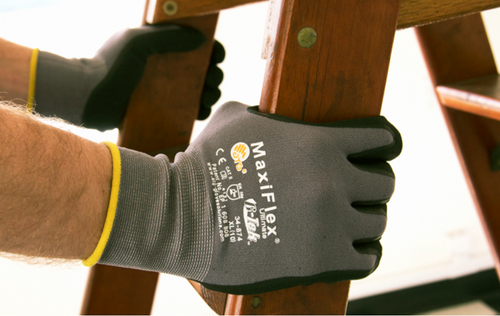The Best Gloves for the Cuts, Abrasions, and Chemical Hazards
There are a thousand type of work gloves on the market these days. Gloves for highly specialized manufacturing and general assembly, and gloves to keep you from developing calluses on your hands while digging a hole. Sometimes they work and sometimes they don't. The more you know about gloves, the easier it is to find the one that will work best for the type of work you do.
The first thing to think about when choosing the right glove is to identify the kind of hazards you are exposed to. Work on an oil rig? Consider anti-vibration. Dealing with hazardous chemicals, however still need breathability? There are gloves for that too.
For the initial type of glove protection from hazards, we can break the offerings into a few categories. Folks trying to protect against simple abrasions and scrapes have a clear favorite glove these days in the ATG G-Tek MaxiFlex glove. The MaxiFlex gloves protect against abrasion extremely well. They have a thin coating of micro-foam nitrile that provides protection, with minimal tactile sensitivity loss.
In the past, guys like my father-in-law, who was an electrician for a local utility, used leather drivers for just about everything, but they had to take the gloves off for finer details. The MaxiFlex gloves let you keep them on for just about everything, and they breathe better. There is even a stronger version of the MaxiFlex called the MaxiFlex Endurance that is just as tough as natural leather.
While there aren't many folks sticking their hands in buckets of razors or broken glass, there are a few of you out there who need extreme protection. In these situations, you might want to ante up a bit and choose Cut-Resistant Kevlar Gloves. These miracles of modern science are great for glass handling, canning, bottling, sheet metal processing, and a range of automotive care.
You can also count on gloves for protection from harsh chemicals. There exist numerous products and solvents that should never come in contact with skin. Luckily there is a broad range of gloves designed to meet the work challenges that require tactile dexterity without actual contact. Depending on the exact chemicals you are trying to protect yourself from, latex (natural rubber), neoprene, nitrile, polyethylene, and vinyl gloves are available under a category called Unsupported Safety Gloves. Only glove industry folks regularly use the term, but it covers a line of chemical protection gloves (most often disposable) for a range of work projects.
This category also includes Hazmat Gloves. Gloves for hazardous materials can cover a whole range of dangers up to and including nuclear waste. Check your MSDS, and have it in hand if you have questions and want to give us a call (1-800-829-9580). We carry North Butyl Gloves in both rough and smooth finishes. These gloves, available in varying lengths, are designed to provide tactile sensitivity while protecting against oxygenated solvents and most oxidizing chemicals.
Another aspect of choosing the right glove is size. While some gloves will stretch to fit, others require a more precise size choice. Measuring glove size is pretty straight forward. Simply take a flexible tape measure and wrap it around your hand over the thumb. Here's how the following measurements conform to glove sizes:
6 in. - Extra-Small 7 in. - Small 8 in. - Medium 9 in. - Large 10 in. - Extra-Large 11 in. - 2X-Large
Whatever you need protection from, chances are we have the right pair of gloves for you. And in case we don't, we can point you in the right direction. Feel free to contact us online at pksafety.com or give us a call Monday through Friday from 6 am till 5 pm PST.
Recent Posts
-
Promoting Safety: National Work Zone Awareness Week is April 15-19, 2024
Each year, the National Work Zone Awareness Week (NWZAW) places the spotlight on the importance o …Apr 11th 2024 -
Understanding 4 Gas Monitors: How They Work & Why They Are Important
In today’s increasingly dynamic industrial landscape, 4 gas monitors have emerged as critical com …Apr 8th 2024 -
April Showers Require Workers to Wear Hi-Vis Safety Rain Gear
While April showers bring May flowers, they also bring challenges, particularly for those working …Apr 1st 2024





